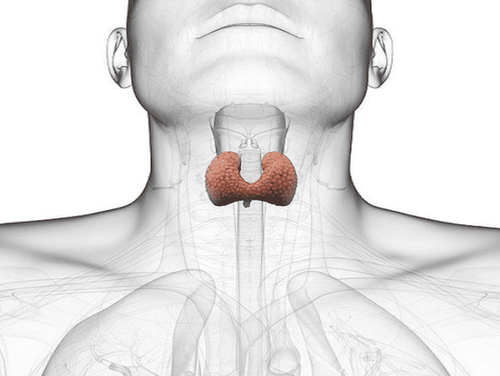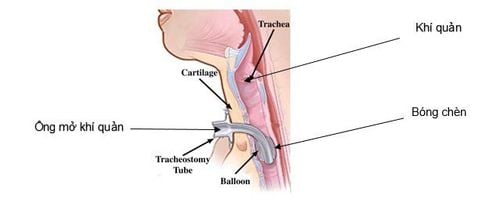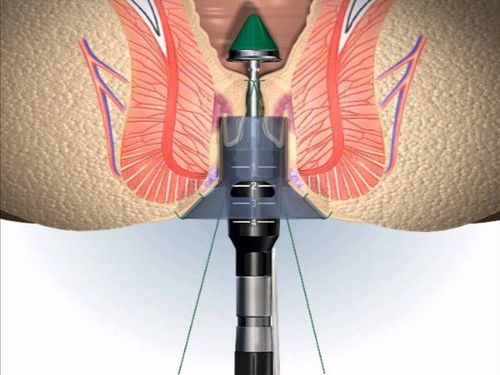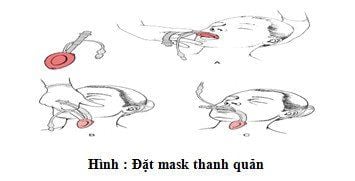This is an automatically translated article.
The article was professionally consulted by Specialist Doctor II Le Minh Viet - Anesthesiologist - General Surgery Department - Vinmec Ha Long International General Hospital.Laryngeal masks are a means of controlling the upper airway. Currently, laryngeal masks are used not only in intubation situations, but also in airway control during anesthesia and emergency resuscitation.
1. What is a laryngeal mask?
Laryngeal mask was invented in 1981 by Dr. Archie Brain, and has been in use since 1988. Medicine is developing day by day and laryngeal mask has been improved many times on the basis of neck laryngeal mask. dictionary.Laryngeal mask is a means of opening the upper airway, composed of a large barrel and an elliptical balloon at the lower end. Once placed and inflated, the balloon is closed with low pressure around the larynx entrance. Due to its convenience and nature, airway control is easier than with an endotracheal tube. Therefore, the laryngeal mask has been officially included in the difficult airway management regimen, especially in the situation where ventilation is not possible, intubation is not possible.
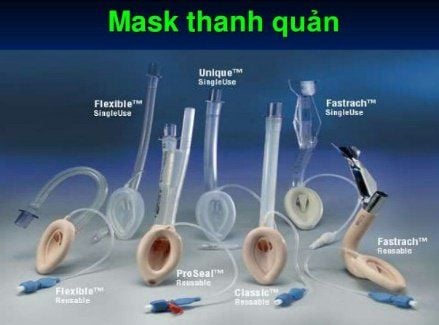
Mask thanh quản là một phương tiện thông suốt đường thở trên
Size 1: Use for infants under 6.5 kg Size 2: Use for children from 6.5 - 15 kg Size 3 : Used for people weighing 25-40kg Size 4: People weighing over 40kg Size 5: Used for fat adults After placing the laryngeal mask, the doctor will check the tightness of the mask with a meter cuff pressure
2. Application of laryngeal mask in anesthesia resuscitation
At present, the laryngeal mask is not only used in difficult airway control situations, but it is also a new trend in airway control in anesthesia resuscitation. Some advantages and disadvantages of using a laryngeal mask in anaesthesia such as:Advantages:
Easy to place, easy to use for inexperienced people Allows rapid control of the airway, firm control of the airway in 98.5% of cases Ensure good oxygen supply Less cause cough reflex, throat irritation compared with intubation Little or no sympathetic reflexes such as: Increased heart rate, increased blood pressure Reduced demand anesthetic, reduce the rate of sore throat.
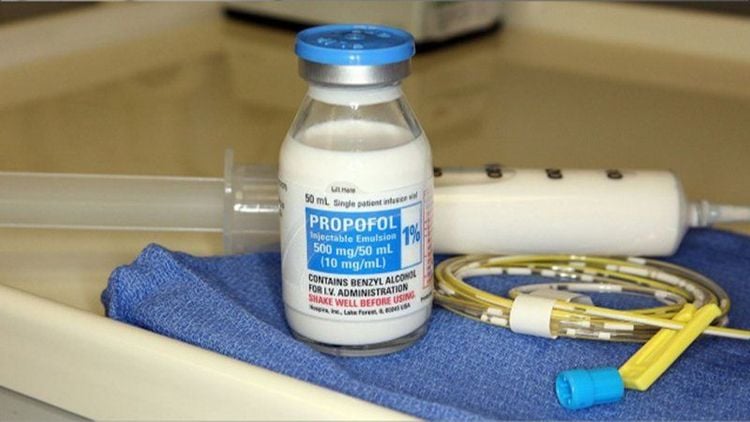
Sử dụng mask thanh quản làm giảm nhu cầu sử dụng thuốc mê của người bệnh
Must ensure enough anesthesia Risk of reflux or aspiration
3. Placing a laryngeal mask in resuscitation anesthesia
3.1 Indications and contraindications Indications for placing a laryngeal mask in anesthesia and resuscitation for the following cases:Moderate and short surgery, < 2 hours Outpatient surgery Difficult intubation towel Contraindicated to use laryngeal mask in anesthesia and resuscitation for cases:
Having pathology in the oropharynx Oropharynx surgeries Full stomach Surgery requiring ventilation with inspiratory pressure above 20cmH2O such as: : prone, fat, asthma, bronchospasm,... Spinal (neck) trauma
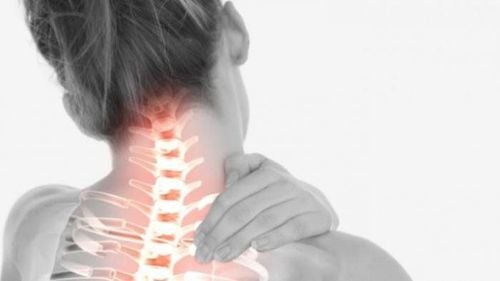
Không sử dụng mask thanh quản trong gây mê hồi sức với bệnh nhân bị chấn thương cột sống
Check the balloon with a cuff pump, make sure the balloon does not leak before placing the balloon deflate, lubricate the back of the mask Initiate deep enough anesthesia, possibly combined with regional neuroanaesthesia, maximally tilt the patient's head, open the mouth. Insert the laryngeal mask through the mouth, lean the back of the mask to slide along the hard palate, place the tip of the index finger of the dominant hand at the junction between the tube and the ball. Push the mask down deep into the throat until you feel an increase in resistance or a black line along the cannula goes up to the upper lip Inflate the balloon with enough pressure, do not hold the tube so that the mask is in place Hold the tube, install the oxygen balloon. Check by gently squeezing, chest will rise and both lungs are heard. Patients can breathe spontaneously through a mask or mechanical ventilation if the inspiratory pressure is less than 20cm H2O, or insert a smaller endotracheal tube through the mask instead. The laryngeal mask will be removed when the patient recovers the reflexes to protect the airways such as: can swallow, open the mouth on command, ... At this time, the balloon will be aspirated to deflate and withdraw, the balloon will also bring sputum. and drool in the throat. Avoid removing the laryngeal mask when the patient is not awake.
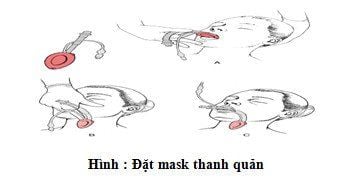
Tiến trình đặt mặt nạ thanh quản cho bệnh nhân
Difficulty placing: Do not try to push the mask inward if it is difficult to put on. It is necessary to check that the tip of the laryngeal mask does not roll, leaning against the back wall of the pharynx. Position the patient's head to the maximum, pushing the lower jaw forward. Deviation and obstruction of the laryngeal mask. During surgery and laryngospasm: Caused by superficial anesthesia and painful surgery, laryngeal mask mobility. Needs oxygen ventilation and deeper anesthesia. Inhalation of vomit into the lungs: after squeezing the 100% oxygen balloon, carefully suction the tube. Replace laryngeal mask tube with endotracheal tube, bronchoscopy. As a precaution, a nasogastric tube should be placed through a mask if it is a double-bore mask. In summary, a laryngeal mask is a means of opening the upper airway and is used to facilitate airway control. Currently, the laryngeal mask is applied in anesthesia and resuscitation due to its many advantages.
Vinmec International General Hospital with a system of modern facilities, medical equipment and a team of experts and doctors with many years of experience in medical examination and treatment, patients can rest assured to visit. examination and treatment at the Hospital.
Specialist II Le Minh Viet has more than 30 years of experience in the field of Anesthesia - Resuscitation, including more than 2 years as a Medical expert in Yemen and former Head of Anesthesia - Resuscitation Department - Hospital Thanh Nhan, Hanoi. Currently, Dr. Le Minh Viet is an anesthesiologist, Anesthesiology Unit - operating room, Vinmec Ha Long International Hospital
To register for examination and treatment at Vinmec International General Hospital, you have You can contact Vinmec Health System nationwide, or register online HERE.




